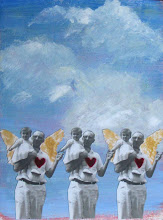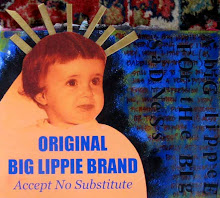What could possibly compel almost every art historian in the world, the greater part of the entire art-viewing public and the number one and number two Nazis to fall for the greatest art hoax in the history of art forgeries? Utter insanity clearly, as it is painfully obvious that the hideous painting portraying Christ and his disciples as neo-zombies is certainly not a Vermeer, nor is it anything even remotely close to being one. Yet, that is exactly what Han van Meegeren accomplished and in the process pocketed the modern day equivalent of tens of millions of dollars. And not only did he manage to hoodwink the art world once, but he did it six times in all, each new painting more horrid than the previous ones. Maybe Hitler and Goering didn't have a clue what a genuine Vermeer looked like, but certainly the dozens of experts in the field of 17th century Dutch masters did and yet they too swooned like school girls upon the "discovery" of these new heretofore unseen Vermeers. And why wasn't anyone suspicious that while it took nearly 300 years to find and verify a mere thirty-six known Vermeers, a staggering six new ones were discovered one after another in the course of just six?
Just how van Meegeren managed to accomplish this, his extraordinary talent at creating what appeared to virtually every expert, technologically speaking, to be a series of genuine 17th century paintings (and that passed all the scientific tests of the day), the dynamics of peer pressure, a collection of arrogant men with grotesquely enormous egos, and plain old fashioned crowd hysteria (the 17th century Dutch tulip mania, anyone?) is mesmerizing as hell. But despite all this, it still begs the very simple question: how the hell could anyone ever think this was created by the genius hand of Vermeer? van Meegeren may have been a brilliant strategist and forger, but the man was a lousy artist. Anyone can see this.
Alarming, fascinating, disturbing, and even very amusing too. And I now have a pretty fairly detailed idea of what it takes to become a successful master forger should I ever decide to quit my day job.
The Forger's Spell: A True Story of Vermeer, Nazis, and the Greatest Art Hoax of the Twentieth Century, by Edward Dolnick, Harper Collins, 2008.
2.09.2010
Vermeer and the Forgeries
Subscribe to:
Post Comments (Atom)






No comments:
Post a Comment